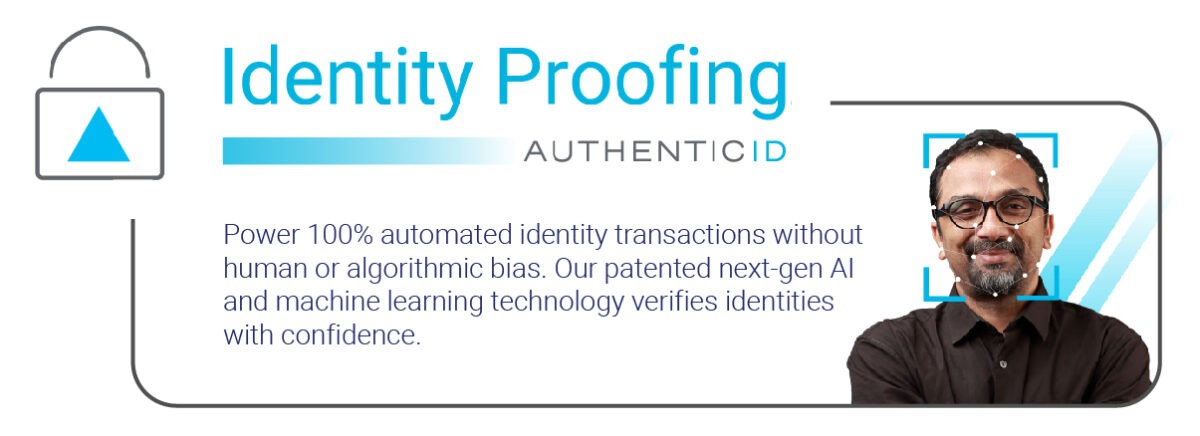As the digital transformation of our economy continues, it’s no surprise that people want their money to move both faster and more securely. Checks can take days to clear, and electronic bank transfers (EBTs) aren’t processed on weekends and rely on traditional banking infrastructure. That’s why it’s no surprise that both digital natives and others, like business owners, are increasingly choosing real-time payments (RTP) and instant payments.
But with the growing adoption of real-time payments comes the increased risk of identity fraud. In this blog, we’ll explore why real-time payments are so popular, why they are vulnerable to identity fraud, and how businesses can protect themselves from these risks.
Real-Time Payments and Their Benefits
Real-time or instant payments occur between bank accounts and are initiated, cleared, and settled in just seconds. These payment systems allow consumers and businesses to transfer money almost instantly, 24/7, making them an appealing alternative to traditional bank transfers, which often take one to three business days to complete. They’re not reversible, so it’s harder to renege on contracts, and the convenience of instant payments encourages payment on delivery, which often impacts small businesses. Additionally, businesses can be impacted by both money being locked in processes (which impacts cash and liquidity management), which can also be alleviated by instant payments.
The proliferation of payments- including those developed nationally by countries around the globe- also help connect unbanked people to payment services.
Why Real-Time Payments Are Popular with Consumers
It’s no surprise that these platforms are gaining in popularity, especially with younger consumers. Over 266 billion real-time payments transactions were recorded globally in 2023. What’s more, the global real-time payments market size is expected to grow at a compound annual growth rate (CAGR) of 35.5% from 2023 to 2030.
Instant gratification is a hallmark of modern consumer behavior. The demand for speed and convenience has extended to payments, giving rise to real-time payment systems. Here’s why consumers favor them:
- Speed: Traditional banking systems can take hours or even days to settle transactions. Real-time payments, however, occur within seconds, giving consumers immediate access to funds.
- Convenience: Real-time payments are available 24/7, allowing transactions to take place outside of regular banking hours, including nights, weekends, and holidays.
- Cash Flow Management: For businesses, instant payments offer improved cash flow management, reducing the need for short-term borrowing and ensuring quicker payments to vendors and employees.
- P2P (Peer-to-Peer) Payments: Peer-to-peer payment apps like Venmo, Zelle, and CashApp have surged in popularity due to their seamless integration with RTP systems. These apps offer users a fast and easy way to pay each other, making real-time payments essential to the digital economy.
However, the rapid nature of these transactions also makes them an attractive target for fraudsters.
Why Real-Time Payments Are Vulnerable to Identity Fraud
While real-time payments offer undeniable benefits to both consumers and businesses, they are susceptible to identity fraud. Of course, most new digital technologies are often exploited by savvy and sophisticated bad actors. And with real-time payments, these platforms and banks can struggle to keep up with a surge in nearly instantaneous fraud.
For instance, real-time payments have led to an increase in authorized push payment (APP) fraud. In APP fraud, a bad actor tricks a victim into authorizing a transfer of funds into their account by posing as a legitimate person or organization. Often, this fraudster claims there’s an urgent need for the transfer to take place. While a victim may believe the payment is legitimate, they’ll realize they were scammed once communication stops. Since the victims authorize the payment themselves, it’s difficult for a bank to recover the funds.
There are key factors about real-time payment technology that make it especially vulnerable to identity fraud:
- Instant Irreversibility: Once a real-time payment is completed, it is virtually impossible to reverse. While a dispute process exists for credit card transactions, instant payments offer little recourse for users who may have been tricked into sending money to a fraudster.
- Speed of Fraudulent Transactions: Fraudsters can take advantage of the instant nature of these payments to move stolen funds quickly. Because the transactions are settled in real-time, there is a small window for companies to identify suspicious activity before the money is gone.
- Social Engineering: Tried and true social engineering techniques, including phishing attacks and SMS scams, often target consumers and businesses alike, leading them to unknowingly provide sensitive information. Fraudsters can use this stolen identity data to initiate unauthorized real-time payments.
- Synthetic Identity Fraud: In RTP systems, synthetic identities—where fraudsters combine both legitimate and fake information to create a new identity—can be used to open bank accounts and make transactions that are hard to trace.
- Weak Authentication Methods: Many real-time payment systems rely on basic authentication, such as passwords or one-time PINs, which can be compromised through phishing or malware, or are available for purchase on the dark web. This creates an entry point for fraudsters to hijack accounts and initiate unauthorized transactions.
How Companies Can Mitigate Real-Time Payment Fraud Risks
While the fraud risks associated with real-time payments are significant, businesses can implement robust identity verification and fraud detection systems to mitigate them. Here’s how:
- Adopt Advanced Identity Verification Solutions: Multi-layered identity verification is crucial in combating identity fraud in real-time payments. This includes biometric verification (including facial recognition), document verification, and behavioral biometrics to ensure that the individual initiating the payment is who they claim to be.
- Implement Continuous Authentication: Authentication should not stop after the initial login. Using continuous authentication measures—such as monitoring behavioral patterns or analyzing the location and device of the user—can help businesses identify and stop unauthorized access during a session. Businesses can also leverage reauthentication for additional verification for large purchases or other transactions that require more security.
- Leverage AI-Powered Fraud Detection: Artificial intelligence (AI) and machine learning (ML) algorithms can analyze transaction patterns in real-time and detect anomalies that indicate fraud. For example, AI can flag unusually large or repeated transactions from a single account, identifying potentially fraudulent activity before funds are transferred.
- Deploy Multi-Factor Authentication (MFA): Requiring users to verify their identity with more than one method (e.g., a password and a code sent to their phone) adds an extra layer of security. Businesses should prioritize the use of MFA to reduce the risk of account takeover fraud as well as unauthorized transactions.
- Educate Consumers and Employees: Often, human error is the weak point in the fraud prevention chain. And with the growing sophistication of fraud, both consumers and employees must be up to date on the latest fraud vectors. Businesses should educate both consumers and employees on how to recognize phishing attempts, the importance of safeguarding personal information, and the steps to take if they suspect a fraudulent transaction.
- Monitor Transactions in Real Time: Continuous, real-time transaction monitoring can help detect unusual activity. By flagging suspicious transactions as they happen, businesses can stop fraudulent payments before they are completed.
- Collaboration with Financial Institutions: Working with banks and financial institutions to share fraud intelligence, data, and best practices can improve fraud detection across the real-time payments ecosystem.
Real-Time Payments Are Here to Stay- Get the Tools You Need to Fight Fraud
With unmatched speed and convenience, it’s clear that real-time payments are here to stay. However, the vulnerabilities they present make them an attractive target for identity fraud. By adopting strong identity verification systems, leveraging AI-driven fraud detection, and educating stakeholders, businesses can stay one step ahead of fraudsters and ensure that the benefits of real-time payments outweigh the risks.
Protect your business today by implementing advanced identity verification solutions to secure your payment processes and safeguard against fraud. Contact us to see our 100% automated machine learning and AI technology-powered identity verification platform that is trusted by the largest U.S. banks, every major U.S. wireless provider, two of the most significant credit bureaus, federal agencies, and 10% of the Fortune 100.


